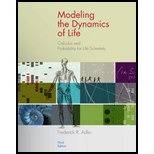
Concept explainers
(a)
To plot: The given function on one graph.
(a)
Explanation of Solution
Given information:
Consider the following functions,
Graph:
The graph of
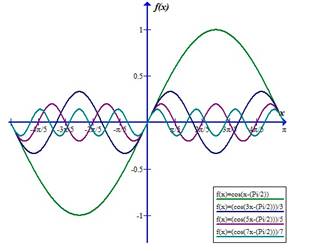
Interpretation:
The graph of the function is getting decreased with respect to
(b)
To sketch:The graph by plotting the sum of
(b)
Explanation of Solution
Given information:
Consider the following functions,
Graph:
The given function is,
On adding
The graph of
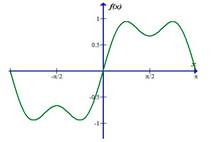
Interpretation:
The graph of the function on adding
(c)
To Sketch:The graph by plotting the sum of
(c)
Explanation of Solution
Given information:
Consider the following functions,
Graph:
The given function is,
On adding
The graph of
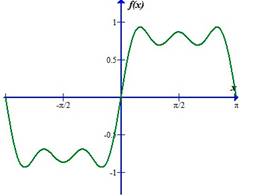
Interpretation:
The graph of the function on adding
(d)
To sketch:The graph by plotting the sum of
(d)
Explanation of Solution
Given information:
Consider the following functions,
Graph:
The given function is,
On adding
The graph of
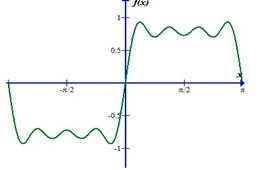
Interpretation:
The graph of the function on adding
(e)
To Explain:How does it look on plotting the sum of
(e)
Answer to Problem 49E
The sum of
Explanation of Solution
Given information:
Consider the following functions,
Calculation:
The sum of
-1 on adding more and more number of cosine terms.
(f)
To analyze:The pattern on adding
(f)
Explanation of Solution
Given information:
Consider the following functions,
Graph:
The given function is,
On adding
The graph of
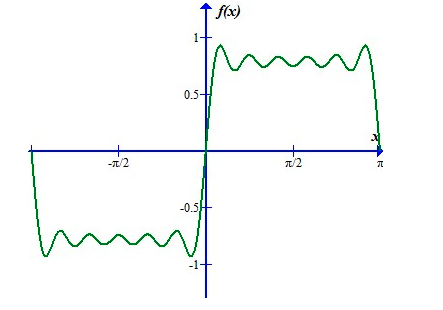
Interpretation:
On adding more number of cosine terms the graph becomes more stable at 1 and -1.
Want to see more full solutions like this?
Chapter 1 Solutions
Modeling the Dynamics of Life: Calculus and Probability for Life Scientists
- Remix 4. Direction Fields/Phase Portraits. Use the given direction fields to plot solution curves to each of the given initial value problems. (a) x = x+2y 1111 y = -3x+y with x(0) = 1, y(0) = -1 (b) Consider the initial value problem corresponding to the given phase portrait. x = y y' = 3x + 2y Draw two "straight line solutions" passing through (0,0) (c) Make guesses for the equations of the straight line solutions: y = ax.arrow_forwardIt was homeworkarrow_forwardNo chatgpt pls will upvotearrow_forward
- 18) Find all the complex cube roots of -2i. Leave your answers in polar form with the argument in degrees.arrow_forward9) Write an equation for the hyperbola. 2+ -6-5-4-3-2 -2- -4- -5+ + 23 45 6xarrow_forward8) Find an equation for the hyperbola with vertices at vertices at (±7, 0) and foci at (±9, 0).arrow_forward
 Advanced Engineering MathematicsAdvanced MathISBN:9780470458365Author:Erwin KreyszigPublisher:Wiley, John & Sons, Incorporated
Advanced Engineering MathematicsAdvanced MathISBN:9780470458365Author:Erwin KreyszigPublisher:Wiley, John & Sons, Incorporated Numerical Methods for EngineersAdvanced MathISBN:9780073397924Author:Steven C. Chapra Dr., Raymond P. CanalePublisher:McGraw-Hill Education
Numerical Methods for EngineersAdvanced MathISBN:9780073397924Author:Steven C. Chapra Dr., Raymond P. CanalePublisher:McGraw-Hill Education Introductory Mathematics for Engineering Applicat...Advanced MathISBN:9781118141809Author:Nathan KlingbeilPublisher:WILEY
Introductory Mathematics for Engineering Applicat...Advanced MathISBN:9781118141809Author:Nathan KlingbeilPublisher:WILEY Mathematics For Machine TechnologyAdvanced MathISBN:9781337798310Author:Peterson, John.Publisher:Cengage Learning,
Mathematics For Machine TechnologyAdvanced MathISBN:9781337798310Author:Peterson, John.Publisher:Cengage Learning,






